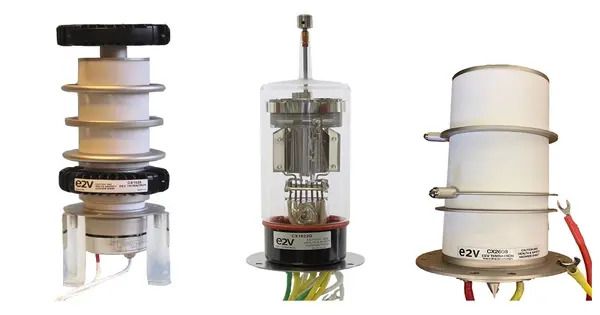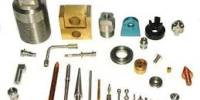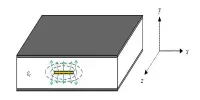A thyratron is a gas-filled tube that functions as a high-powered electrical switch and controlled rectifier. It functions similarly to a vacuum tube, but with one major difference: it incorporates gas or a metal vapor, which improves its switching capabilities. Thyratrons can withstand far more current than comparable hard-vacuum tubes. When a gas is ionized, electrons multiply, resulting in a phenomena called as Townsend discharge.
Mercury vapor, xenon, neon, and hydrogen (in special high-voltage or short-switch applications) are among the gases employed. A thyratron, unlike a vacuum tube or valve, cannot linearly amplify signals.
Construction and Operation
- Structure: A typical thyratron consists of an anode, a cathode, and one or more control grids. The tube is filled with a gas such as hydrogen, mercury vapor, xenon, or deuterium.
- Operation: When a voltage is applied to the anode and cathode, the gas ionizes, allowing current to flow. The control grid modulates this process, enabling the thyratron to act as a switch.
- Triggering: By applying a small voltage to the control grid, the ionization process can be initiated or halted, thus controlling the large current flow between the anode and cathode.
Thyratrons were developed in the 1920s from early vacuum tubes like the UV-200, which contained a small quantity of argon gas to improve its sensitivity as a radio signal detector, and the German LRS relay tube, which also contained argon gas.
Gas rectifiers that predated vacuum tubes, such as the argon-filled General Electric “Tungar bulb” and the Cooper-Hewitt mercury-pool rectifier, also had an impact. Irving Langmuir and G. S. Meikle of GE are widely regarded as the first investigators to research controlled rectification in gas tubes, about 1914. The first commercial thyratrons debuted around 1928.
Applications
- Pulsed Power: Thyratrons are commonly used in applications requiring high-speed switching of high-voltage currents, such as in radar transmitters, pulsed lasers, and particle accelerators.
- Lighting: In older lighting systems, thyratrons were used in the control circuits for fluorescent lights and other discharge lamps.
- Industrial Uses: Thyratrons are used in some types of industrial equipment for controlling high-power AC circuits.
Advantages
- High-Speed Switching: Thyratrons can switch on and off very quickly.
- High Voltage and Current Handling: They can handle large voltages and currents, making them suitable for heavy-duty applications.
- Durability: They are robust and reliable under harsh operating conditions.
Disadvantages
- Aging and Maintenance: The gas inside the thyratron can degrade over time, requiring maintenance or replacement.
- Control Complexity: Managing the triggering and deionization can be complex compared to solid-state devices.
- Size and Weight: Thyratrons are generally bulkier and heavier than modern solid-state switches.
















